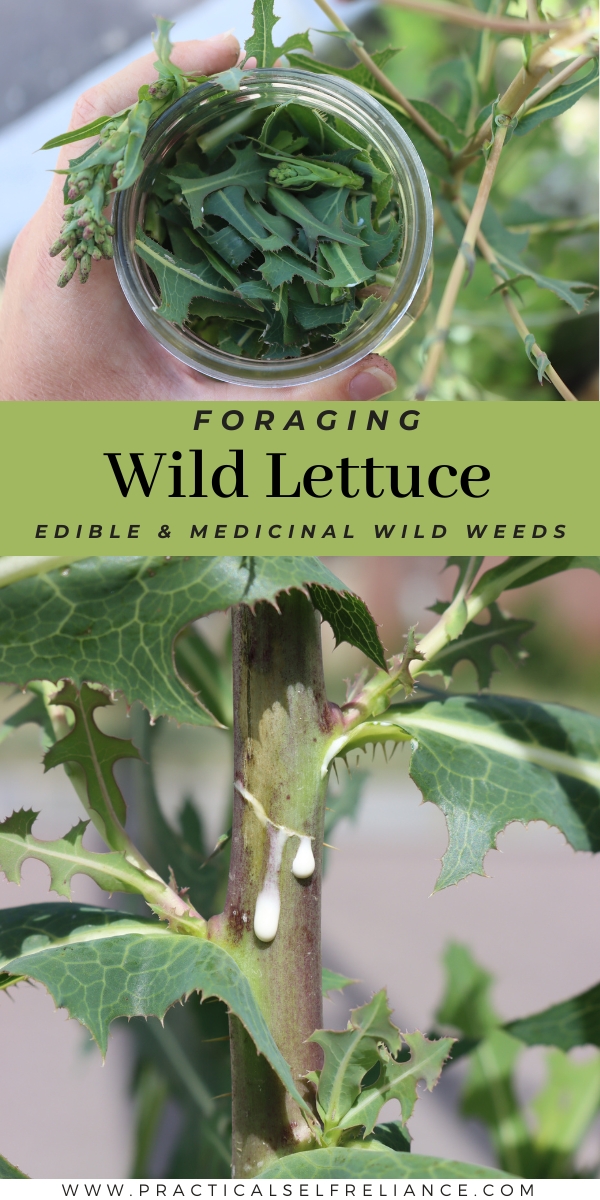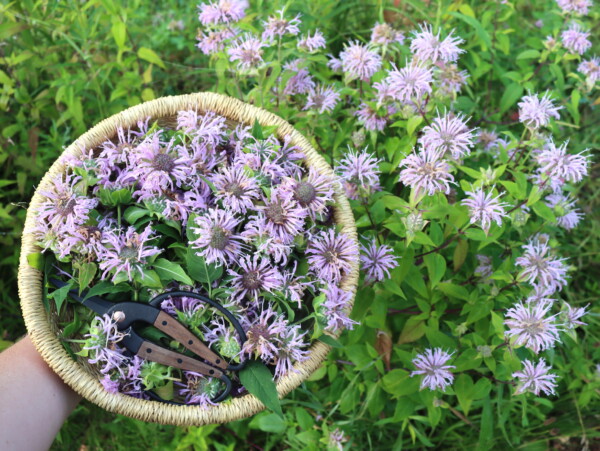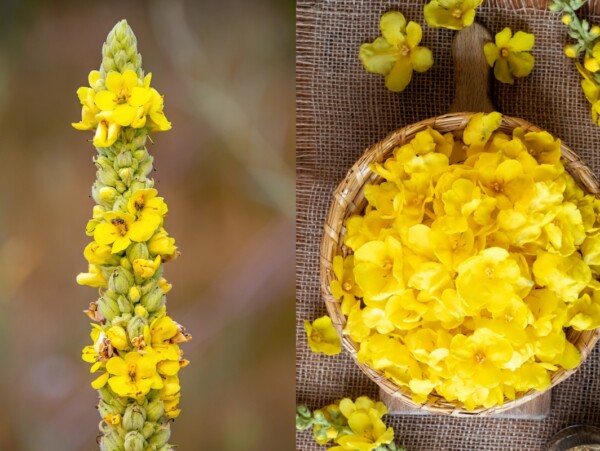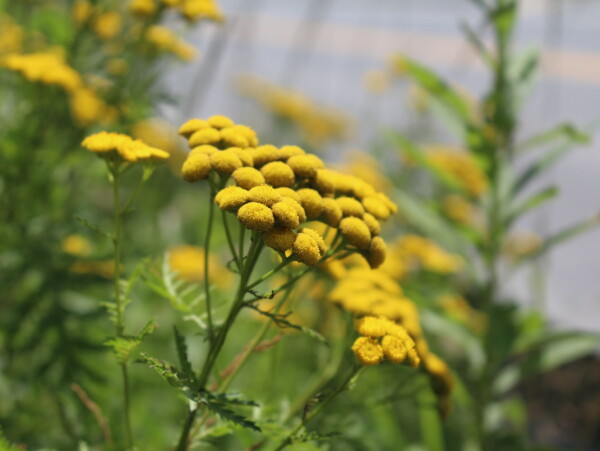Affiliate disclosure: This post may contain affiliate links. Please see our Privacy Policy.
Wild lettuce is a common wild edible plant that’s sought after by foragers for its medicinal properties, namely its sedative and pain-relieving effects.
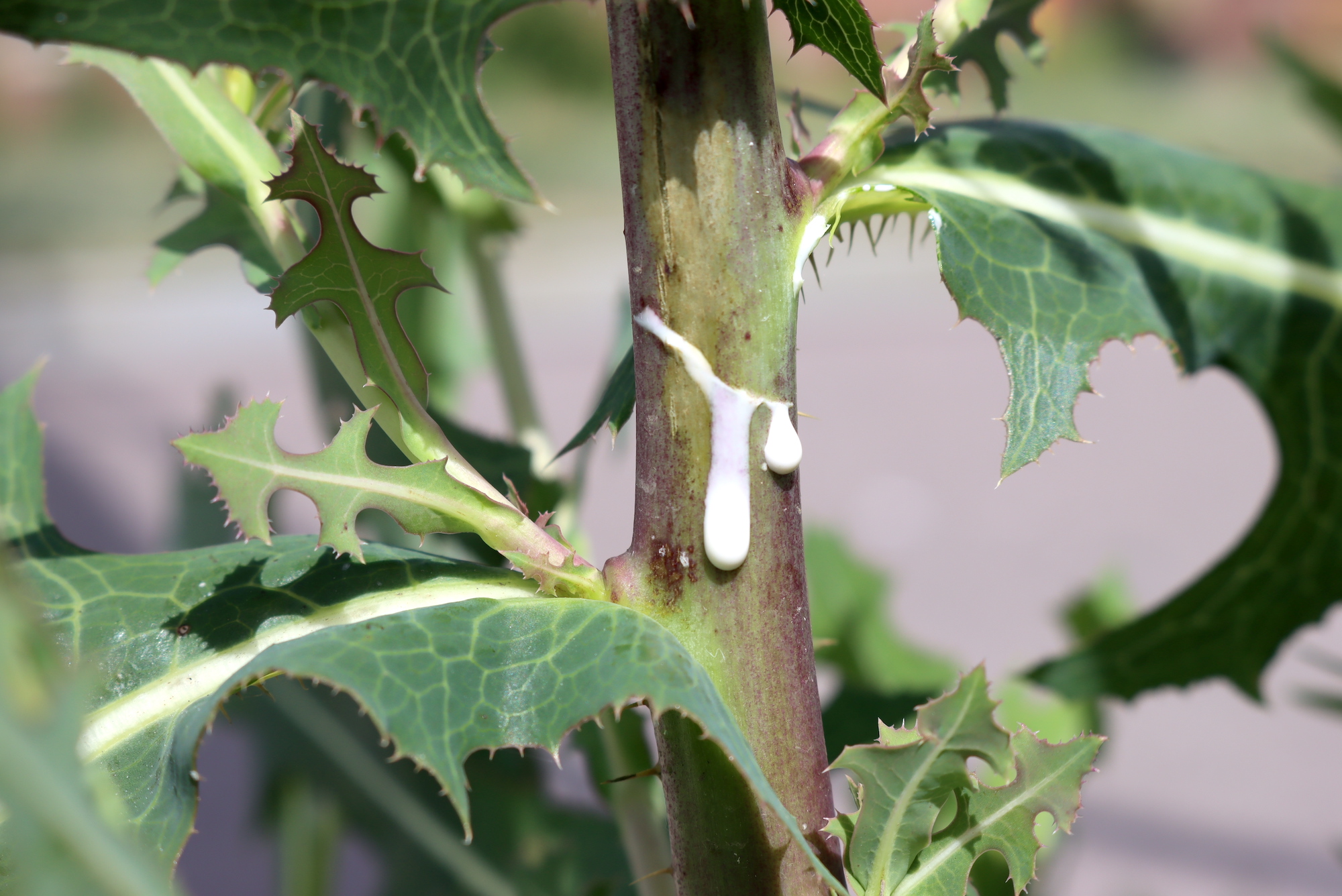
Table of Contents
Wild lettuce is a potent natural pain reliever with a long history of traditional use in cultures around the world. Historically, it was considered a safer alternative to more intense treatments, all of which are considered illicit narcotics these days.
Anecdotally, it’s an incredibly effective herbal treatment for chronic pain, and I’ve heard many people swear by it for chronic low back pain and insomnia associated with discomfort.
While many of the wild plants I forage on a regular basis are woodland edibles, wild lettuce species tend to prefer urban and suburban areas. They’ll grow right up through sidewalk cracks, near railroad tracks, and from abused patches of soil beside strip malls and back alleys. This is one of those plants that’s perfect for foragers that don’t have nearby access to vast tracts of wild land.

(Always consult your doctor or a clinical herbalist before trying any new herbal remedy, as there’s always the possibility of unintended consequences, allergic reaction, or interactions with other medication. If you’re harvesting wild plant material, make sure you’re 100% confident in your identification and consult multiple sources for your ID. The following is based on my research and experience, but I don’t claim to have any certifications that would qualify me to advise you on your health. Please do your own research and always verify with multiple reputable sources.)
What is Wild Lettuce?
Wild Lettuce includes several herbaceous biennial weeds. Just like common garden lettuce, they’re in the Latuca genus and the sunflower (Asteraceae) family. Twelve of these Wild Lettuce species are native to North America. There are also several species that are native to Europe and Asia such as Lactuca quercina, Bitter Lettuce (Lactuca virosa), and Prickly Lettuce (Lactuca serriola) that have naturalized in North America.
In this article, I’ll primarily focus on species like Bitter Lettuce (Lactuca virosa), which are relatively common and well-known for their medicinal or edible properties. You may also hear Bitter Lettuce (Lactuca virosa) called wild lettuce, bitter lettuce, poisonous lettuce, opium lettuce, great lettuce, tall lettuce, laitue vireuse, or rakutu-karyumu-so.
Some of the other medicinal Wild Lettuce species we’ll touch on in this article include Prickly Lettuce (Lactuca serriola), Tall Blue Lettuce (Lactuca biennis), and Canada Wild Lettuce (Lactuca canadensis).
Wild Lettuce species can get confusing because most have several common names, and some share common names. You may also hear any of them simply referred to as Wild Lettuce rather than by their species name.
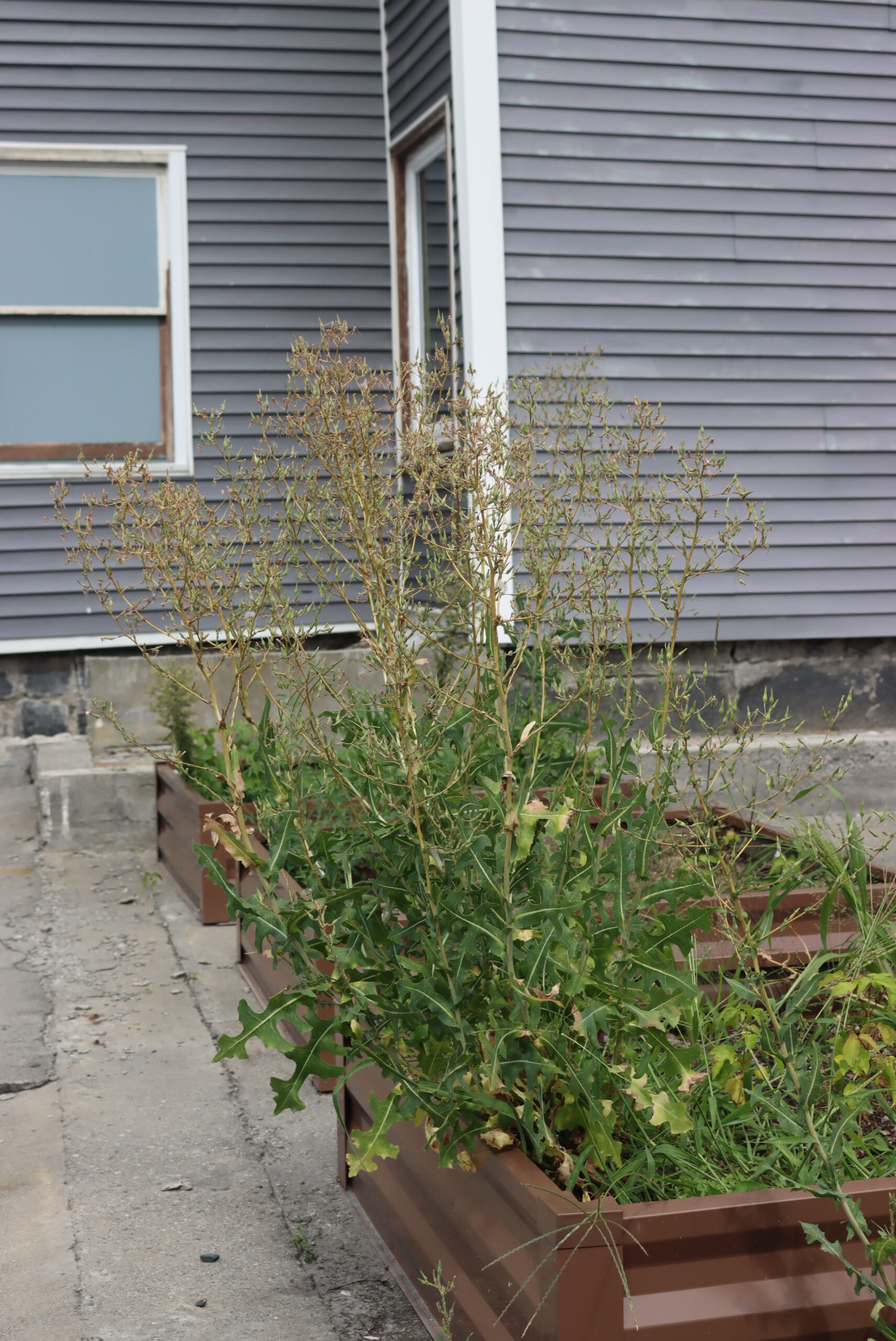
Is Wild Lettuce Edible?
Wild Lettuce is edible, but specific species are far tastier than others. Some experienced foragers, like expert Sam Thayer, consider Canada Wild Lettuce (Latuca canadensis) best for fresh eating. This species has a refreshing, mild flavor, not unlike cultivated lettuce. You can also cook Wild Lettuce, which sometimes improves the taste of less-choice species or more mature leaves.
At a more mature stage, Wild Lettuce plants begin producing more of a compound called lactucarium. This compound, sometimes referred to as lettuce opium, has similar analgesic, relaxant, and sedative properties as opium. With a bit of caution, herbalists use this lettuce opium in internal preparations.
As Wild Lettuce has sedative properties, you should avoid taking Wild Lettuce if you’re consuming alcohol or taking sedatives, opioids, antihistamines like Benadryl (diphenhydramine), or other herbs and supplements with sedative properties.
Wild Lettuce isn’t addictive, but you should still take small doses and avoid consuming it for more than three days in a row. Too much Wild Lettuce extract or other preparations can result in nausea, vomiting, dizziness, insomnia, anxiety, or cardiac issues.
Though there have been reports of overdoses of Wild Lettuce, including a case where a group of young adults injected Wild Lettuce extract intravenously, all the affected individuals made full recoveries within three days.
Wild Lettuce preparations have not been tested for use in young children, so they should only be consumed by adults.
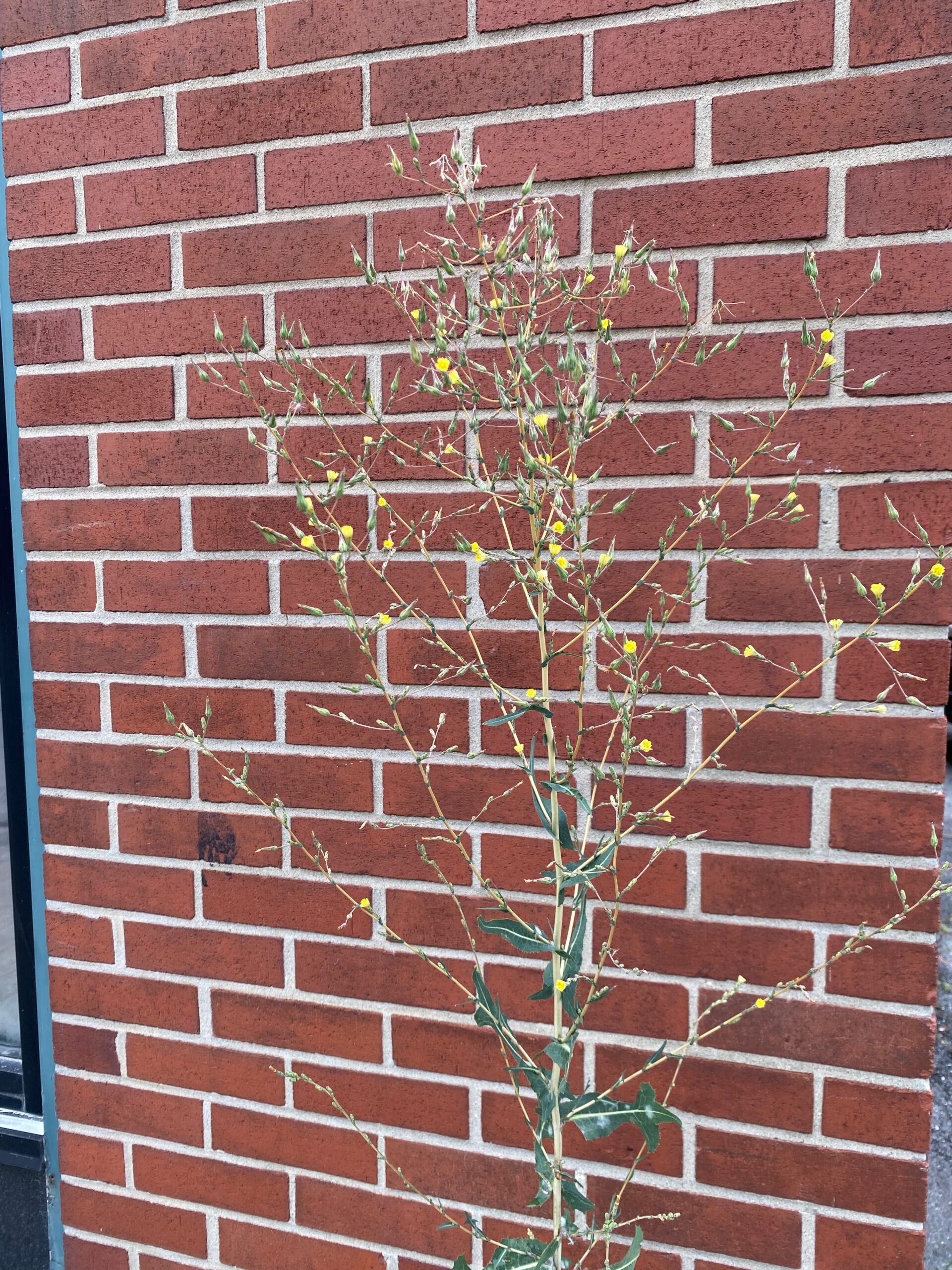
Wild Lettuce Medicinal Benefits
Wherever it grows, folks have long recognized Wild Lettuce as a powerful medicinal plant. When the stems or leaves are cut, they exude a white latex sap called lactucarium. This sap resembles the sap from opium poppies in its physical and medicinal attributes. Wild Lettuce sap has analgesic, sedative, and relaxent properties.
During the 19th century, it was common for folks to dry the white latex sap into a thick solid and use it as a mild opium replacement and pain reliever. In early pharmacopeias, it was often referred to as lettuce opium.
However, its use dates back much farther than that. Wild Lettuce was included in Persian physician-philosopher Avicenna’s The Canon of Medicine, completed in 1025 CE.
Historians also found that the first Roman Emperor, Caesar Augustus, who lived from 53 BCE to 14 CE, claimed to have taken wild lettuce infusions to recover from severe illness and had a statue and altar built in the plant’s honor.
In 1898, Wild Lettuce was added to the United States Pharmacopoeia. It was listed as an herb for use in syrups, lozenges, and tinctures to help with sleep and alleviate sore throats and chest conditions.
Throughout history, herbalists have used the plant to treat pain, kidney disorders, sunburn, whopping cough, menstrual pain and issues, and as a sedative and diuretic.
While Bitter Lettuce (Lactuca virosa) is the common choice for medicinal preparations, early research completed for the 1898 King’s American Dispensatory written by Harvey Wickes Felter, M.D. and John Uri Lloyd, Phr. M., Ph. D. indicated that lactucarium could be produced in a similar way from Lactuca sativa and Lactuca canadensis var. Elongata. Additionally, latucarium from Lactuca serriola or Lactuca quercina may be the highest quality.
Modern herbalists generally accept that all Wild Lettuce species share some of the medicinal properties, though some may be less potent. Today, Herbalists use the leaves, stems, sap, and oil from the seeds medicinally. Frequently, herbalists tincture fresh or dried leaves and stems to create mild sleep aids or pain relievers. Some herbalists believe that lactucarium may also reduce intestinal inflammation and uterine cramping.
Modern research into Wild Lettuce’s effect on humans is sadly lacking. However, a few studies have begun exploring its beneficial properties. One study looking at compounds in Domestic Lettuce (Latuca sativa) found that they were better at treating itching related to renal failure than the drug Gabapentin.
While not completed on humans, another explored the pain-relieving and sedative properties of Wild Lettuce in mice. Researchers gave the mice doses of lactucin and lactucopricin, compounds in Wild Lettuce. Researchers found that in the correct doses, these compounds had comparable pain-relieving effects to ibuprofen.
Another study further supported these findings. Researchers discovered that lactucin had significant sedative properties in mice at low doses (2mg/kg), and at higher doses (15mg/kg), it had notable pain-relieving effects.
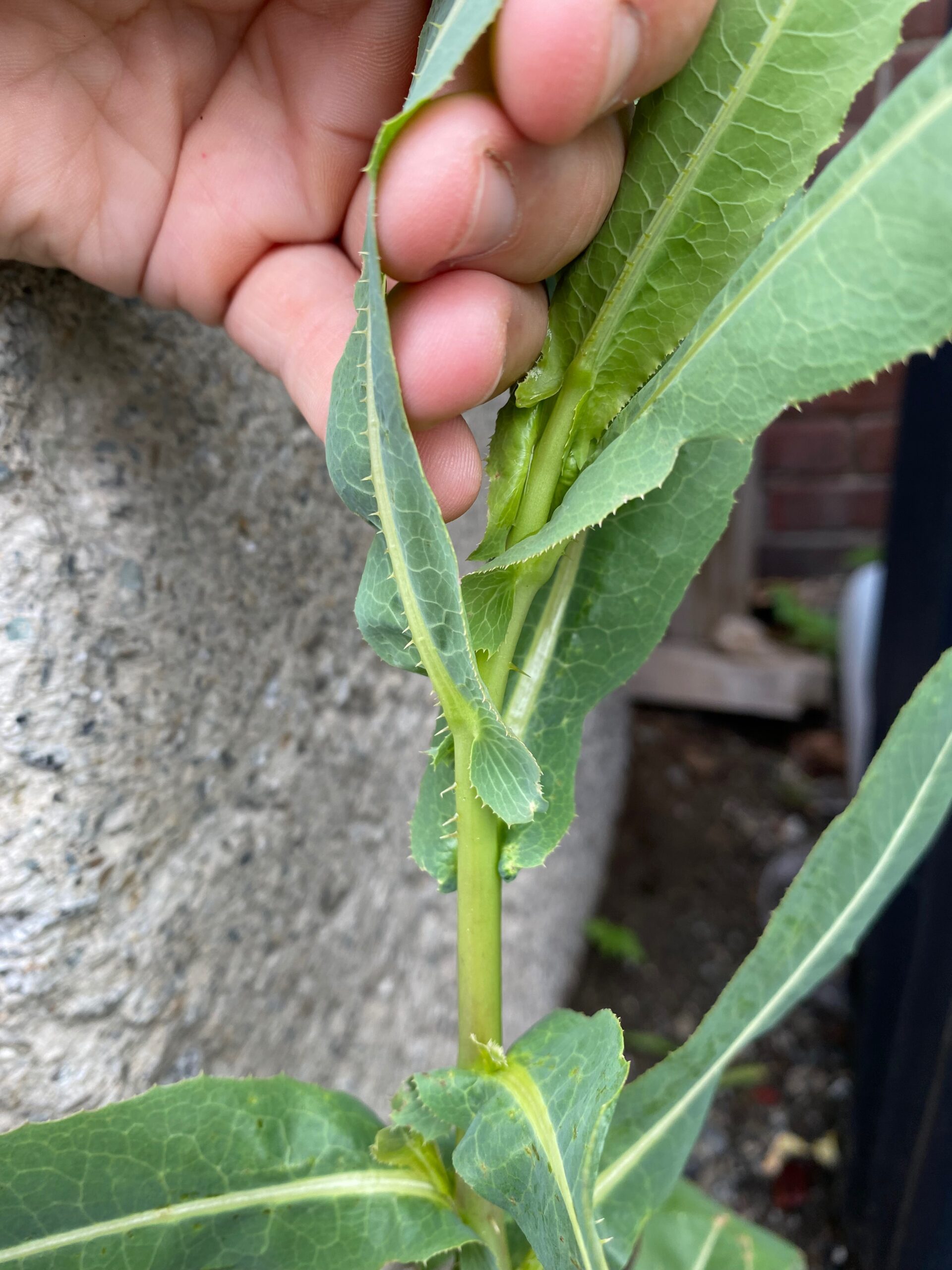
Where to Find Wild Lettuce
You can find at least one species of Wild Lettuce growing in every part of North America except the Arctic. Different species of Wild Lettuce have adapted to different habitats.
Two common species throughout North America, Canada Wild Lettuce (Latuca canadensis), which isn’t limited to Canada, and Tall Blue Lettuce (Latuca biennis), are commonly found in wooded areas. They will grow in the forest understory but are most abundant in disturbed areas like those from logging or storms or other openings along river bottoms, trails, old roads, and overgrown fields.
The European Prickly Lettuce (Latuca serriola) and Bitter Lettuce (Lactuca virosa), which have naturalized in North America, prefer more open areas. It’s common to find them growing as a weed in agricultural areas, pastures, vacant lots, roadsides, and waste places.
Most species of Wild Lettuce are fairly weedy and can tolerate a wide range of soil conditions, including alkaline, neutral, and acidic soils. Some species, like Canada Wild Lettuce (Latuca canadensis), will tolerate relatively high soil moisture, such as along streambanks. Other species, like Prickly Lettuce (Latuca serriola), will grow in drier soils of the southwestern United States.
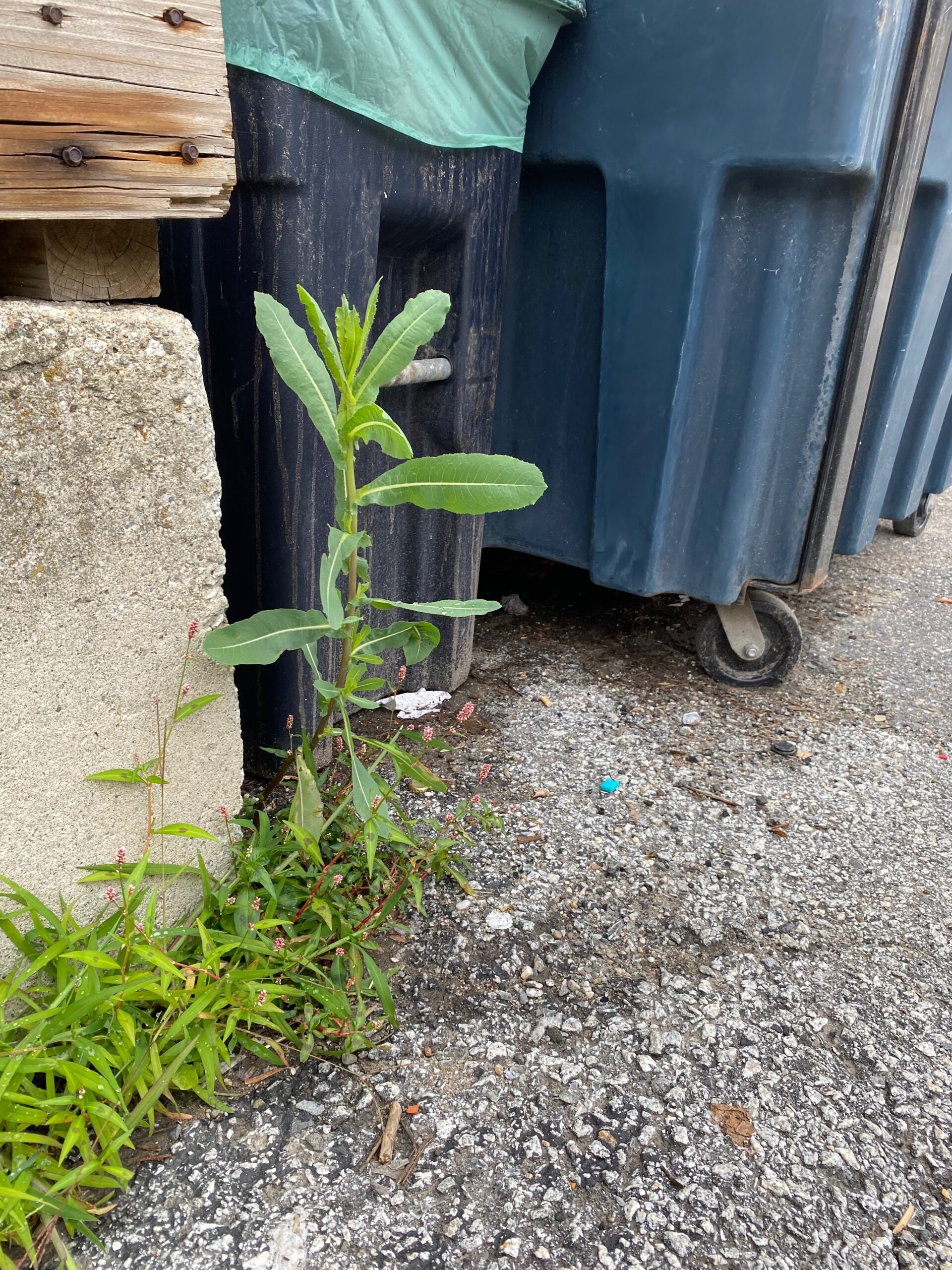
When to Find Wild Lettuce
For fresh eating, you should look for Wild Lettuce in early summer. Wild Lettuce has an extensive range, so the exact timing will vary depending on your location. Those in southern areas can expect to find Wild Lettuce first, as early as late spring in some areas.
As a salad green, you should harvest Wild Lettuce leaves in their flowering year, their second year of life as a biennial plant. The leaves are most tender when the flower stalk is just starting to push above the leaves and is 6 inches tall or less.
When the flower stalk grows a bit taller in early or midsummer, it is also mild and tender. At this time, you can harvest the stalk as you would asparagus.
Generally, the leaves become too bitter to eat fresh as the plant ages. However, some foragers find they can still be used as a potherb, though you may need to boil them in multiple water changes to alleviate the bitterness.
For medicinal purposes, you want to harvest the plant or its sap when it’s in flower, as this is when the concentration of lactucarium increases. Depending on your location and the species, flowering usually occurs in late summer or early fall, from about July through September. However, it may occur earlier or later in the outer extents of its range.
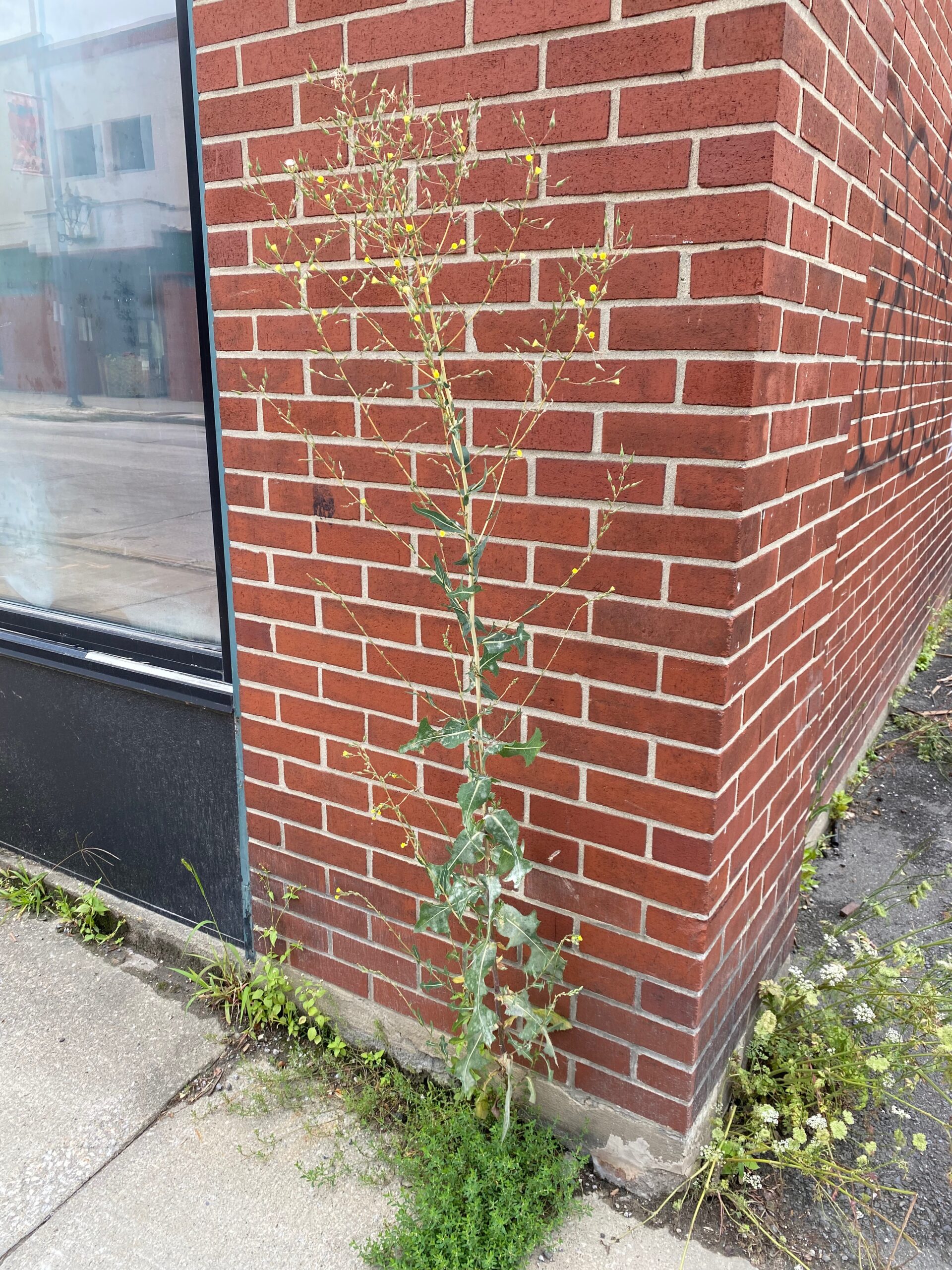
Identifying Wild Lettuce
Wild Lettuce is a weedy biennial plant that begins its first year of life as a basal rosette of leaves before shooting up and flowering in the late summer of its second year.
In its first year, the rosette and leaf shape can look dandelion-like until you do further study. In its second year, the flower stalk shoots up and, in some species, can reach up to 16 feet tall!
All parts of Wild Lettuce plants exude a white latex sap when broken, and to some extent, all species have trichomes (thin hairs or spines) along the underside of the leaf midrib.
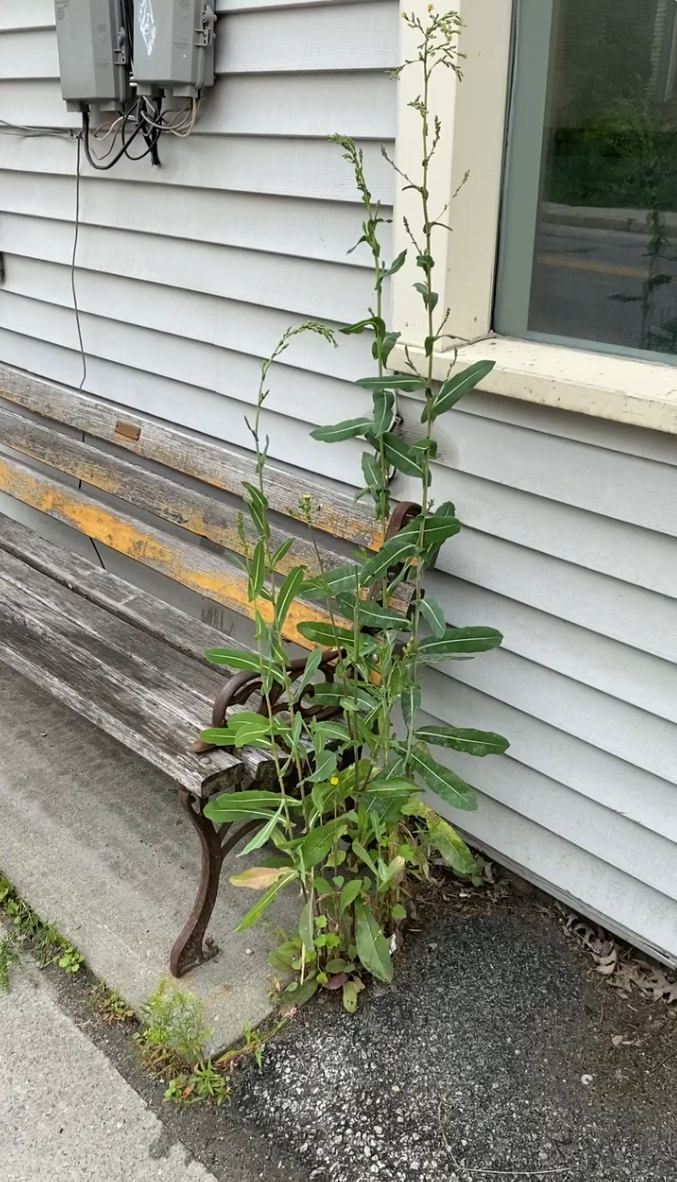
Wild Lettuce Leaves
The leaf shape of Wild Lettuce varies immensely with individual species. In most species, they’re about 5 to 10 inches long. They grow alternately on the flower stalk and, in many species, clasp the stem. The leaves of Wild Lettuce species tend to be long and relatively narrow, and many are runcinate or lobed, though this isn’t the case for every species.
Canada Wild Lettuce (Lactuca canadensis) tends to have runcinate or very deeply lobed green leaves. The leaves are glabrous except for along the midrib.
The leaves of Bitter Lettuce (Lactuca virosa) are usually roughly oblong to lanceolate with undulating margins. They tend to be waxy and gray-green.
Prickly Lettuce (Lactuca seriola) leaves also have undulating margins but are usually runcinate. The margins also feature stiff bristles. Prickly Lettuce’s leaves are unusual in that they will turn to maximize their sun exposure, sometimes looking like the entire plant has been pressed, so it’s all along a flat plain.
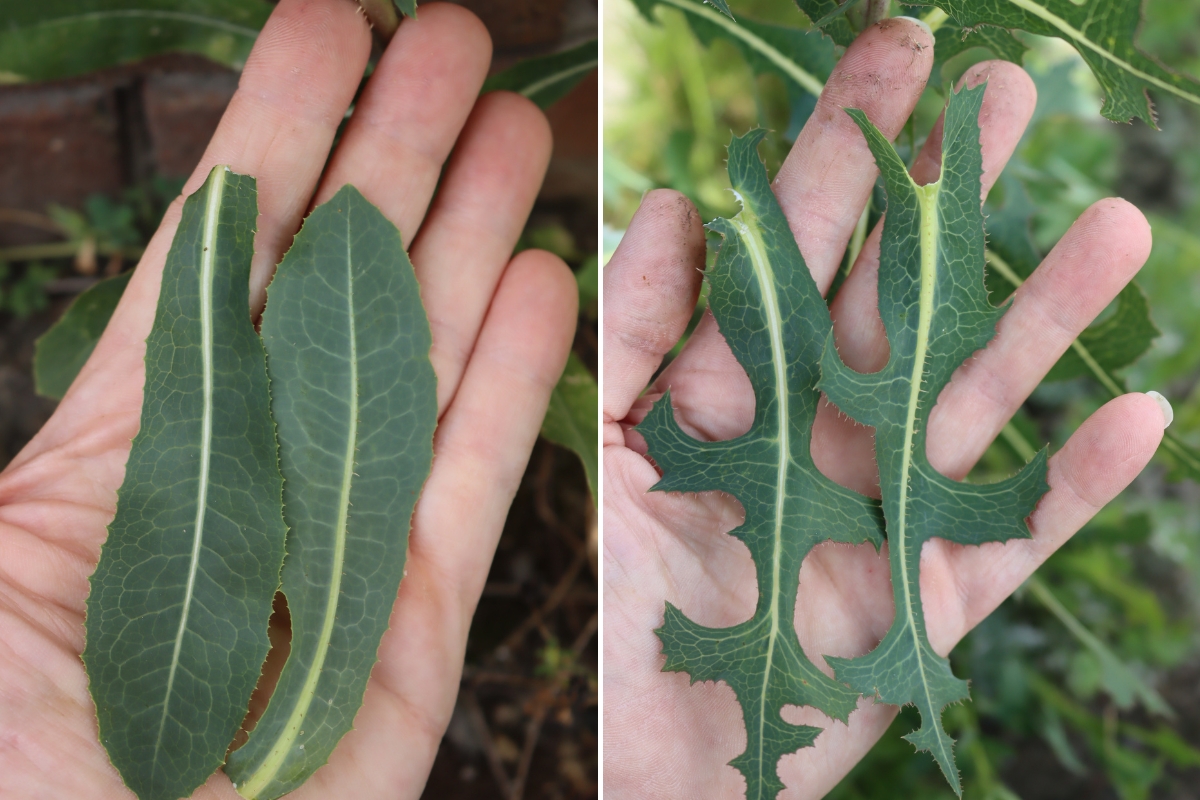
Tall Blue Lettuce (Lactuca biennis) leaves tend to terminate in an arrowhead shape and have deep lobes along the margins. They also usually have scattered hairs across their entire underside rather than just along the midrib.
Wild Lettuce Species have long, thin hairs or spines along the underside of their midrib. In some species, particularly Canada Wild Lettuce (Lactuca canadensis), these hairs may be thin or absent on some leaves. However, they are almost always present on at least some leaves and help distinguish the plant from look-alikes like Sow Thistle and Dandelion.
The leaves’ midribs are solid and triangular-shaped. You can see this feature well if you slice a leave and examine a cross-section. The leaves also all exude a white latex sap when crushed or cut.
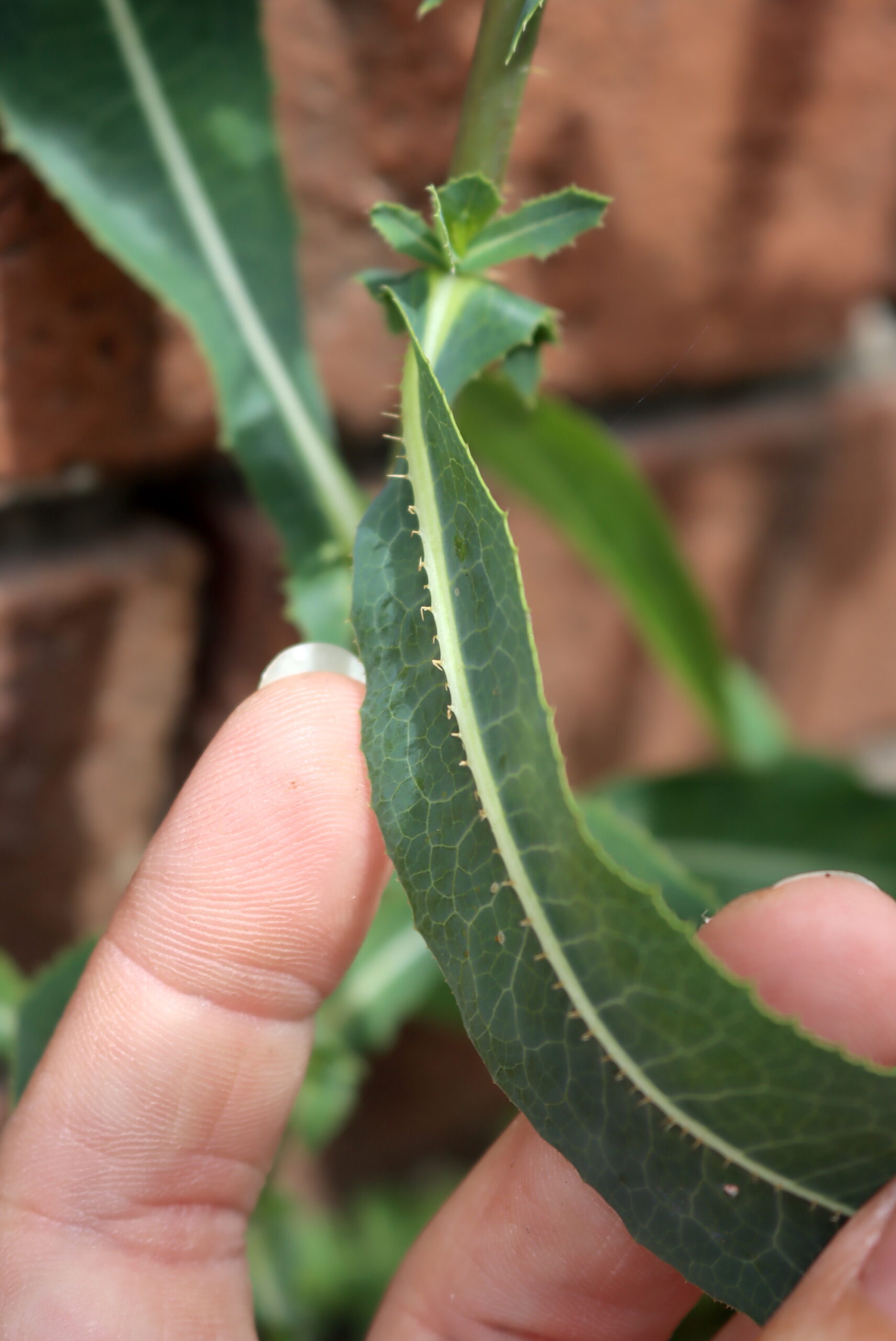
Wild Lettuce Stems
Wild Lettuce stems grow in the second year. They are tall, stiff, hollow stems that vary in height with species. Usually, the stems are glabrous and green or blue-green, often with reddish or purplish mottling.
Bitter Lettuce (Lactuca virosa) may reach 7 feet tall, while Canada Wild Lettuce (Lactuca candadensis) stems usually range from 5 to 9 feet tall.

Prickly Lettuce (Lactuca serriola) stems tend to be much shorter and stouter, rarely exceeding 5 feet in height. In contrast, Tall Blue Lettuce (Lactuca biennis) stems usually range from 6 to 11 feet in height, though they may reach up to 16 feet!
The stems mainly branch at the top, where they produce flowers. Like Wild Lettuce leaves, the stems of all Wild Lettuce species exude a white latex sap when crushed or cut.

Wild Lettuce Flowers
Wild Lettuce flowers in late summer or early fall, sending up tall flower stems. Usually, when the flowers are young and unopened, they form a tightly packed cluster atop the stem, though they spread and become more branched as they mature.
The flowers are composite in shape and generally resemble miniature dandelions, though they may be different colors.

Bitter Lettuce (Lactuca virosa), Prickly Lettuce (Lactuca serriola), and Canada Wild Lettuce (Lactuca canadensis) all feature yellow flowers. In contrast, Tall Blue Lettuce (Lactuca biennis) flowers are usually light, dull, and bluish-white.
The flowers are generally fairly small, about 6 to 15 millimeters (0.25 to 0.59 inches) wide.
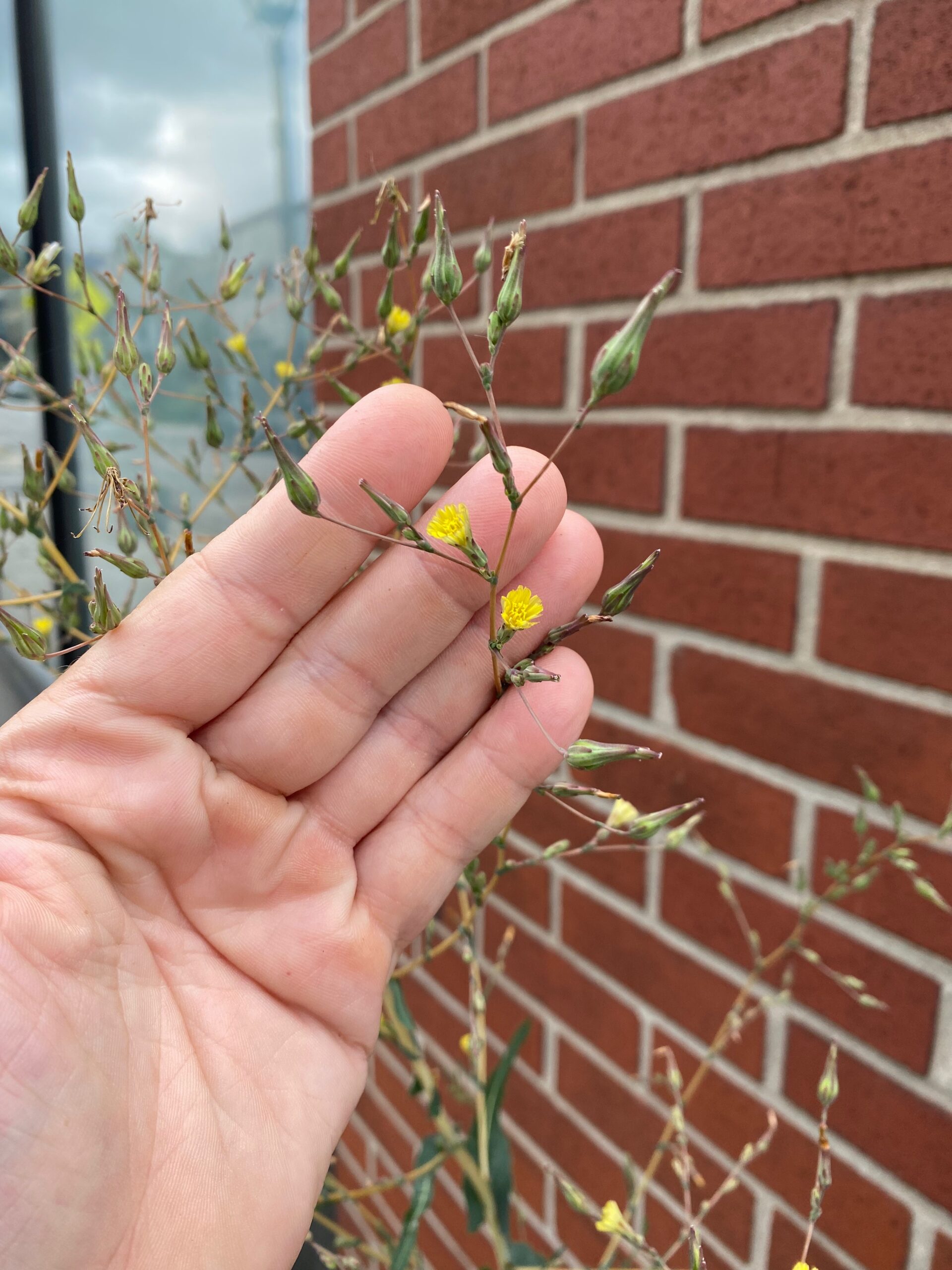
Wild Lettuce Seeds
The seeds of wild lettuce are a bit like dandelion seeds, with little tuffts that catch the air and transport them on the wind.
Of course, they’re much higher off the ground than dandelions, and the flowers are much smaller. You’ll find them 3 to 6 feet off the ground, and the seed heads only have a dozen or so seeds each.

The seeds themselves, again, are very similar in appearance to dandelion seeds (or cultivated lettuce seeds). If you had them on a table without the plant or flowers nearby it’d be hard to tell the difference.
Of course, if you’re pulling seeds from this plant, you’d do it on a mature plant that you’ve positively identified, so that’s not really an issue.

Wild Lettuce Look-Alikes
Wild Lettuce species are sometimes confused with Sow Thistle (Sonchus spp.), another common weed with yellow flowers. However, they can be distinguished in a few ways:
- The undersides of Sow Thistle Leaves are smooth and lack hairs along the undersides of the midribs.
- Sow Thistle leaves have a small, curled section of leaf where they clasp the stem called an auricle.
- Sow Thistle leaves often have fewer lobes than Wild Lettuce leaves and have spines on the margin, helping distinguish them from most species except Prickly Lettuce (Latuca serriola).
- Sow Thistle often grows in colonies spreading by prominent, lateral rhizome-like roots.
Another common look-alike is the Dandelion (Taraxacum officinale). However, it can also be distinguished in a few simple ways.
- Dandelion leaves are smooth and lack hairs along the underside of the midrib.
- A cross-section of the midrib forms a rounded hump rather than a triangle.
- Dandelion flower stalks only reach 3 to 12 inches tall and feature a single flower.
Lastly, Wild Lettuce can be mistaken for Bull Thistle (Cirsium vulgare) and other true thistles that share similar characteristics. Thankfully, they too differ in a few easy-to-spot ways:
- True thistles are very spiny and have many more spines present on their leaves and along their stems than any Wild Lettuce, including Prickly Lettuce (Lactuca serriola).
- True thistle leaves lack hairs along the underside of the midrib.
- True thistle leaves have milky white veins.
- True thistles have comparatively large flowerheads that are red-purple in color and are surrounded by bracts.
Ways to Use Wild Lettuce
If you catch it at the right time, Wild Lettuce makes a delicious salad green, particularly those leaves from Canada Wild Lettuce (Lactuca canadensis). Some other species have tasty greens, too. Just try to harvest your leaves when the flower stalk is about 6 inches tall or a bit shorter for the best fresh leaves.
Older leaves and those of certain species may be much more bitter. These leaves generally aren’t ideal for fresh eating, though you may get away with them in a large greens mix. However, you can also use them as a potherb, cooking them in soups, stir-fries, and stews. You may need to boil exceptionally bitter leaves and change the water several times to remove the bitterness.
As the flower stalk grows taller, it also makes a tasty vegetable, somewhat similar to asparagus. Expert forager Sam Thayer enjoys it this way and says it has a mild peppery flavor. Harvest these flower stalks long before they flower when the buds are still small and tightly packed, and the stem and buds are tender. Try them steamed or sauteed with butter or olive oil.
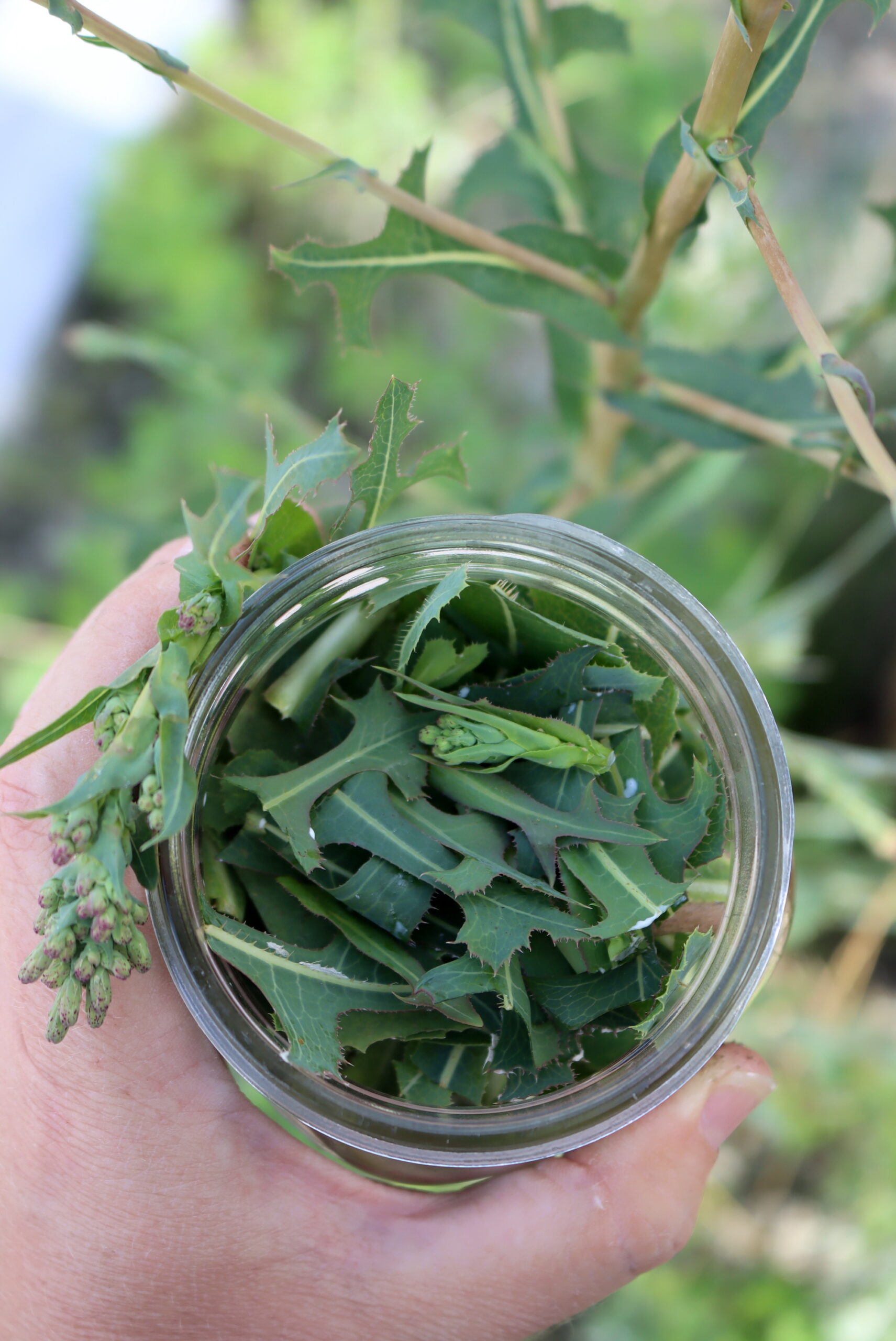
While Bitter Lettuce (Lactuca virosa) is the most well-known for its medicinal properties, all wild lettuce species contain lactucarium, which can help relieve pain and sleeplessness. Plants have the highest concentrations of this important compound while they’re flowering, so this is the ideal time to harvest them for medicinal use.
You can slice the stems and harvest just the sap, drying it on wax or parchment paper for later use. In the past, it was common to make many slices in the stem and collect the sap with a piece of cotton before squeezing it into a jar to dry. You can use the dried sap in capsules or other preparations. Experiment with small doses, especially if you’re new to Wild Lettuce.
Today, we know that the whole plant contains medicine and is generally much easier to handle. Harvest the whole plant for use in teas, tinctures, lozenges, or other internal medicines. These can all help relax and soothe joint pain, sore throats, insomnia, and other pain and soreness.
For modern use, the most common medicinal preparation is wild lettuce tincture. It allows you to preserve the medicinal benefits for use anytime right from your herbal medicine cabinet.
If you find wild lettuce, you can make your own wild lettuce tincture, or you can buy a bottle of it ready made.
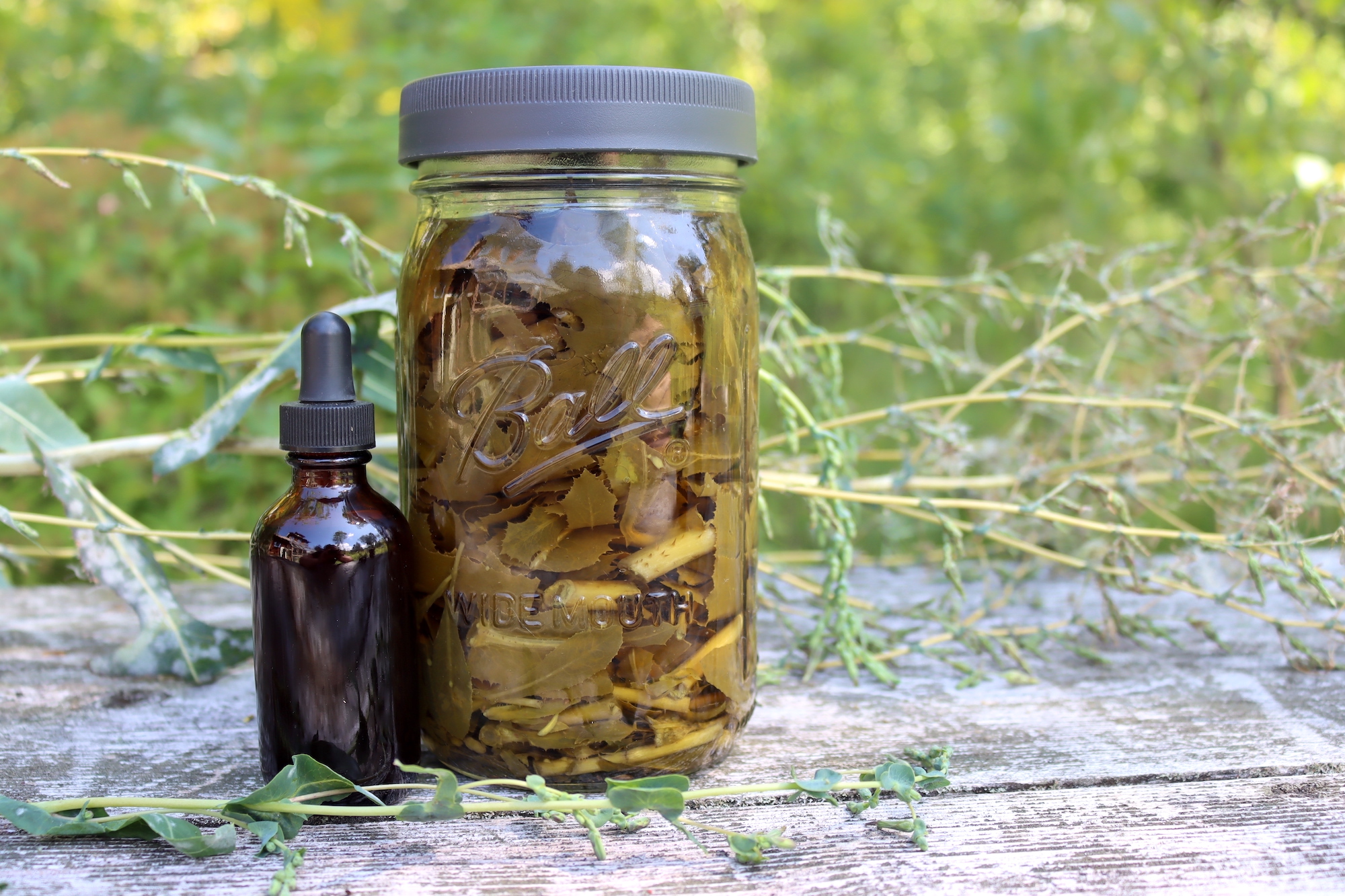
Wild Lettuce Recipes
- If you find some Wild Lettuce leaves ready for fresh eating, try incorporating them in this great Edible Wild Greens salad recipe from The Forager Chef.
- If Prickly Lettuce is the species you have locally, learn how to cook it properly with this tutorial from Larkins Wild Edibles School.
- If you want to use your Wild Lettuce plants medicinally, be sure to check out Feral Foraging’s excellent video showing you how to make a concentrated, shelf-stable Wild Lettuce extract to help treat pain and sleeplessness.
- Learn to make a soothing, tasty tea from Prickly Lettuce flowers with this video from Larkins Wild Edibles School.
- Alternatively, you can use the leaves to make a pain-relieving tea or herbal bath soak with this recipe from Northern Appalachia School.
